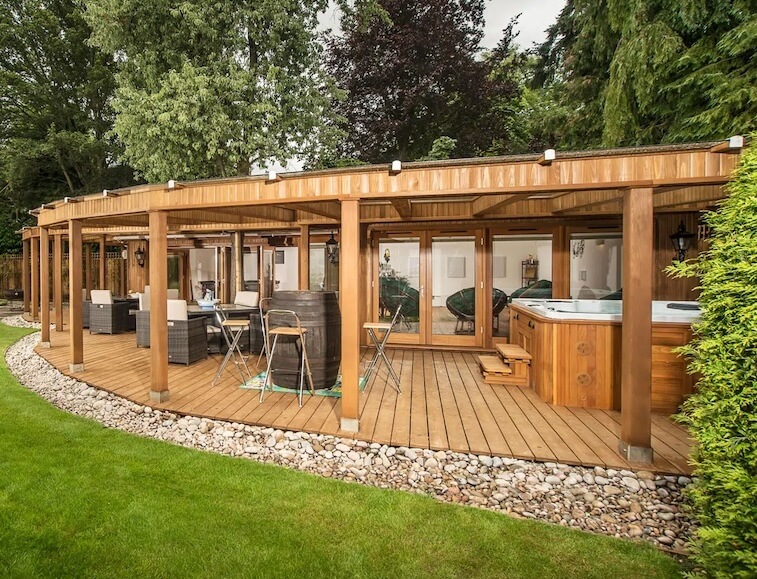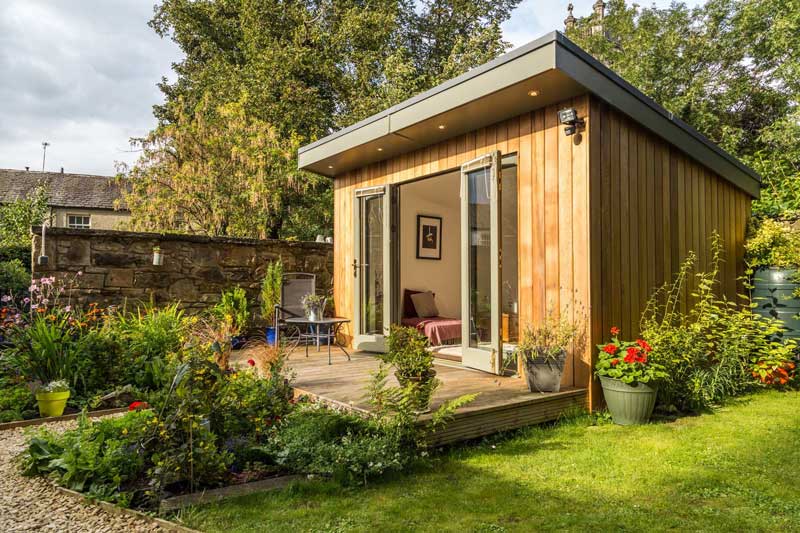New News On Planning Permission On Garden Offices
New News On Planning Permission On Garden Offices
Blog Article
How Much Planning Permission Do You Require For A Gardening Room Etc.?
When considering the construction of gardens, conservatories, and outhouses as well as extensions or gardens offices, traffic issues are one factor that may affect the need for planning permission. Here are the main factors to consider: Visibility and Sight Lines
Planning permits are required if the construction project is causing a disruption to the drivers' visibility when entering and exiting the building. It may also impact sight lines at bends and junctions. The planning authority will evaluate whether the building is danger to road safety.
Distance to the highway
The construction of structures that are close to the highway, like extensions to the front garden or near the street, typically require permission to plan. The distance between the structure and the highway is also controlled to prevent any interference.
Access and Egress
Planning permission is required when you plan to alter or create new access points. This will ensure that access and egress are secure and don't disrupt the flow of traffic.
Parking Provision
If the proposed structure affects existing parking spaces or needs additional parking the planning approval is required. The planning authority will decide whether the proposed development provides enough parking and doesn't cause congestion in parking on the street.
Traffic Generation
Planning permission will be required for developments that are likely to create more traffic, such gardens that are used as business offices that have clients on site. Traffic levels within the region and road safety are assessed.
Effect on Pedestrian Access
Planning permission will be required if the proposed structure is blocking pedestrian walkways or pavements. The safety of pedestrians as well as making sure that they are able to access the site is paramount.
Impact of Construction on Highways
It could be necessary to obtain planning permission if construction activities result in an impact on highways. This could include the movement of heavy trucks and temporary obstructions. The authority for planning may set conditions to limit disruption to the roads during construction.
Drainage and Water Runoff
Another factor to be considered is the effect of the construction on drainage or runoff. Planning permission ensures the new structure will not exacerbate any drainage or flooding issues that could negatively impact the highway.
Street Furniture and Utilities
Planning permission is required when the proposed construction will affect street furniture, underground utilities, or both (e.g. water pipes, cables, etc.). This will be handled by the planning authority in coordination with other authorities.
Highway Authority Guidelines for Compliance:
The local highway authority may have specific rules and guidelines for development near highways. To maintain road safety it is necessary to obtain planning permission to make sure the development is in line with these regulations.
Noise and Disturbance From Traffic
The new structure might cause more noise or traffic (e.g. the office that is located in the garden and has deliveries and visits). Planning permission is required to limit any negative impact.
Accessibility to Public Transport
The development that will affect accessibility to public transport facilities, such as stations for trains or bus stops require planning permission. The impact on passengers of public transport and the integration into the transport system is taken into account.
In summary, highways concerns are a significant aspect in the planning permission process for conservatories, garden rooms, outhouses, garden offices or extensions. To ensure that the proposed development does not negatively impact the safety of roads and traffic flow and pedestrian accessibility, or the overall infrastructure, ensure that you check this. Consult with the local planner and highway authority early on in the process of planning to address any concerns and ensure that the development is in compliance. Follow the recommended slatted cladding garden room for more examples including out house, my outhouse, outhouse buildings, garden buildings , outhouse buildings, composite garden rooms, what is a garden room, costco garden buildings, garden outhouse, costco outbuildings and more.
What Kind Of Planning Permit Would You Need To Build An Area For A Garden, As An Example?
When deciding if permits are required to construct a garden office garden rooms or conservatories along with outhouses or outhouses in the neighborhood, it's important to think about whether neighbors are concerned. Here are some key factors to take into consideration privacy and overlooking:
Planning permission is normally needed when a new construction could overlook neighboring properties and result in privacy loss. This will ensure that the proposed structure does not negatively impact the living conditions of nearby residents.
Overshadowing, Loss of Light
Planning permission is required when the proposed building could cause an overshadowing effect or decrease in light from a adjacent properties. Local planning authorities will assess the effect of sunlight and daylight on adjacent homes.
Noise and Disturbance
The planning permission is required in the event that the garden area is to be used for creating noise, for example, an office at home where customers can visit an office, workshop or music room. The volume of the noise has to be acceptable to the neighbors and should not create disturbance.
Visual Impact and Character
The size, design and appearance of a new structure must be in harmony with the surrounding neighborhood. Planning permits ensure that the project is appealing to the eye and does not interfere with the aesthetics of the neighborhood.
Boundary proximity:
If the structures are higher than 2.5 meters, and they are located within 2 meters of the property line Then permission for planning is required. This is necessary to resolve any potential conflicts or impacts on neighboring properties.
Shared Access as well as Rights of Way
To ensure that shared access or rights of way aren't impeded or adversely affected by the construction, planning permission will be required.
Objections from Neighbors:
The consultation of neighbors regarding planning requests is allowed. Planning authorities will consider objections from neighbors when deciding whether permission should be granted.
The impact on the value of property:
Planning permission is often needed when major changes to the value of the homes within your vicinity occur. This might not be the primary factor however it could impact the decision. Local authorities will be considering the effect on property values of these modifications when making their decision.
Covenants and Deed Restrictions
There could be deed restrictions or covenants on the property which need to be followed regardless of planning permission. These legal agreements may determine what can and cannot be built. not permitted to be constructed. This can negatively impact the harmony of the neighborhood.
Construction Disturbance:
Planning permission may address concerns about the disturbance created during construction including dust, noise, and traffic. It might be necessary to establish conditions to limit the impact on neighboring properties.
Impact of Infrastructure
Planning permission is required if the construction will put more strain on infrastructure in the area, such as drainage, parking and roads.
Community Consultation
In some cases a larger community-based consultation is needed in certain cases, particularly when the proposed development is controversial or large. This permits more democratic decisions that takes into consideration the views of the local population.
In the end, concerns regarding the neighborhood play a major role in deciding if the construction of a conservatory, garden room or outhouse, garden office or extension is allowed. To make sure that the proposed development has no negative impact on the quality of life and privacy and the quality of lighting, noise levels and the overall character of the neighborhood, it's important to check the plans. Consult with the local authority for planning and involving neighbors early in the planning process can aid in addressing these concerns and help facilitate a smoother approval process. View the recommended composite garden for more recommendations including garden office, how to get power to a garden room, composite summer house, garden room permitted development, outhouses for garden, composite garden office, composite garden rooms, outhouse, garden room or extension, outhouse builders and more.
What Kind Of Permission Do I Require To Use My Garden, Etc. Regarding Agricultural Lands
If you plan to build a conservatory, a garden office, an outhouse or extend your land then you must obtain permission to plan. Here are some important considerations:
Land designated for agriculture is generally used for farming and other related activities. The change of its purpose to gardens or residential uses requires approval for planning. This is because it requires a change in its intended agriculture purpose.
Permitted Development Rights:
Residential land has a different set of development rights that are permitted as compared to agricultural land. It is possible to construct some agricultural structures without planning permission. However, these kinds of structures are not intended for offices or residential gardens.
Size and Scale
The proposed size and scope of the building will determine the amount of planning permission required. Planning permission is more likely needed for large buildings or structures that cover a greater area.
The impact of agricultural use
More likely is that planning permission is required in the event that a structure being constructed interferes in the agricultural use of the land. For example, reducing the available area for crops or animals.
Green Belt Land:
The land restrictions are designed to limit the growth of cities and also protect open space. Typically, any construction on Green Belt property requires planning approval and must satisfy strict criteria.
Design and Appearance
The structure's style and appearance should reflect the rural nature of the surrounding area. Planning permission will ensure that the proposed structure doesn't negatively affect the landscape.
Environmental Impact:
Any construction on agricultural land must be considered in relation to the environmental impacts. An environmental assessment may be required for planning approval to ensure any new construction will not cause harm to wildlife habitats and ecosystems in the area.
Proximity to existing buildings:
The proximity of the garden room or office to buildings used for agriculture could influence the planning requirements. Construction structures that are located close to farm buildings are treated differently than the ones on open fields.
Access Infrastructure
It is crucial to think about the effects of the new structure on access and infrastructure, including roads, water and waste management. If you are applying for planning permission, the city will evaluate whether the infrastructure is able to support the building.
Use Class Order:
Agricultural land falls under specific use classes that are defined by planning laws. In order to ensure that the new use is compliant with local policies regarding planning and regulations, it's usually necessary to get planning permission prior to modifying the class.
Local Planning Policy:
Local authorities for planning have policies that are specific to agricultural land. These policies will help determine whether planning permits are granted for non-agricultural structures, while taking into account factors such as local development plans and community needs.
National Planning Policy Framework
In the UK, National Planning Policy Framework (NPPF) gives guidelines as to how land should best be developed and utilized. Planning permission for structures on land used for agriculture will be evaluated in light of the NPPF which focuses on sustainable development and protection of rural land.
Generally, permission to build extensions, gardens or conservatories on land that is agricultural is required due to the need to alter the use of the property, and to ensure compliance with both the federal and local planning regulations. Contact the local authority for planning to learn about the regulations and then obtain the approvals you need. View the recommended office pods for the garden for website tips including what size garden room without planning permission uk, what size garden room without planning permission, garden rooms brookmans park, my outhouse, herts garden rooms, Tring garden rooms, how to lay decking on soil, my outhouse, garden office, composite garden office and more.